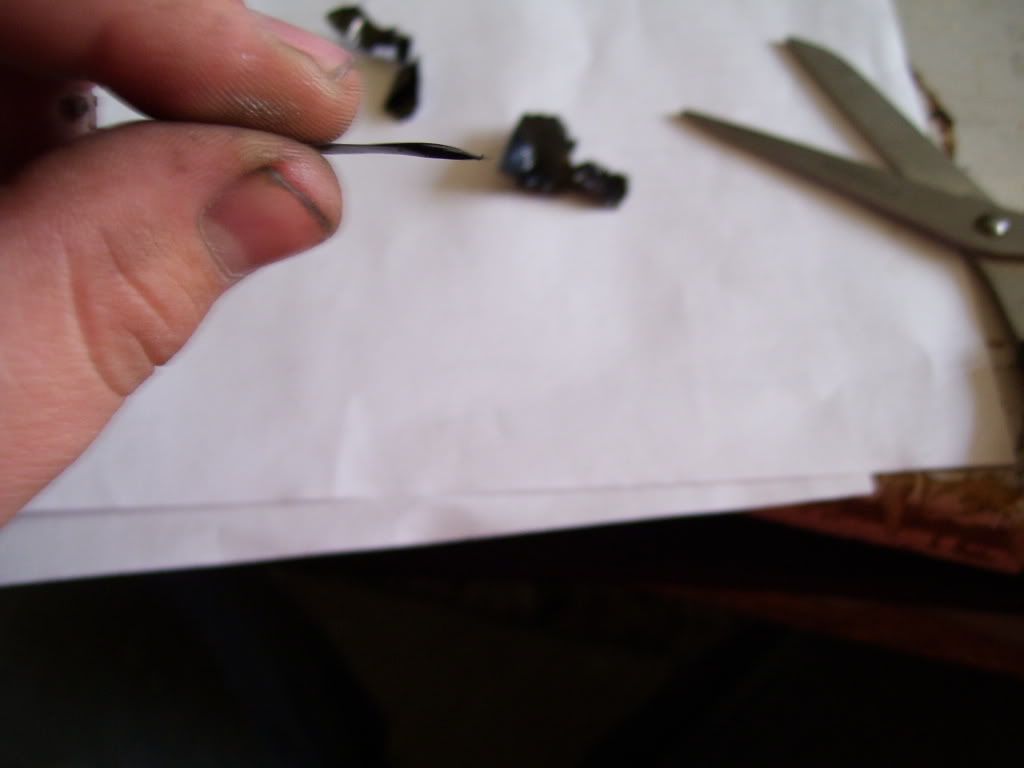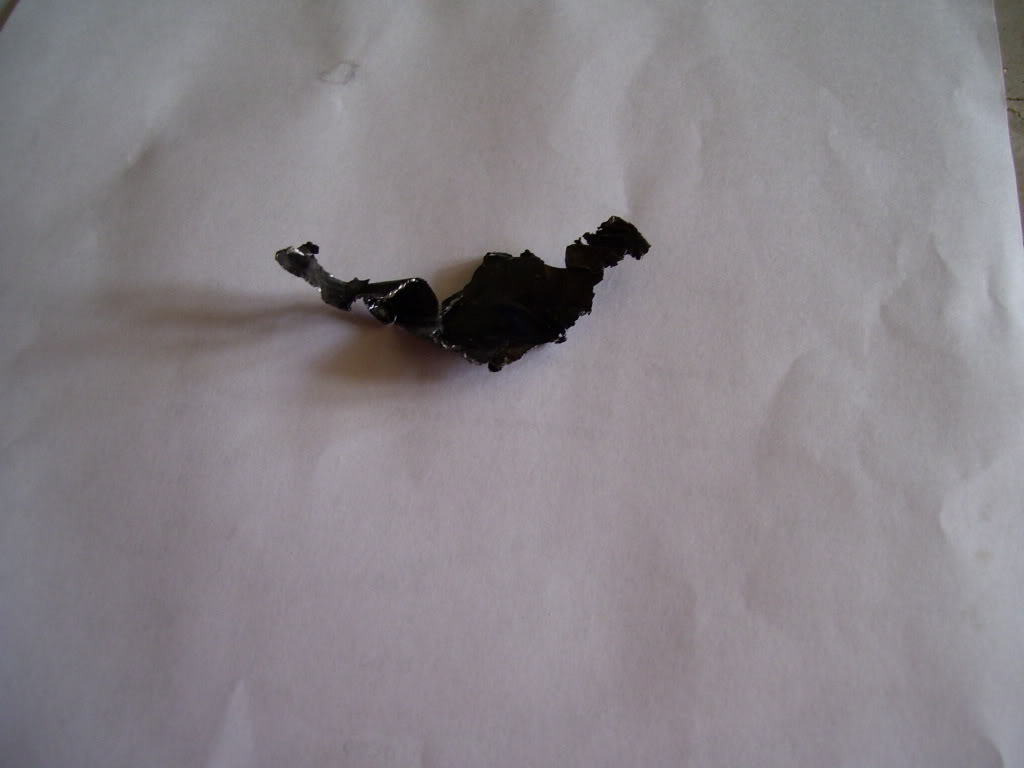 |
 |
 |
 |

|


|
|
|
|
|
|
#16
|
|||
|
|||
|
You could always pull the crank and stick a new one in there too.
__________________
1979 240D with a 617 turbo diesel. |
|
#17
|
|||
|
|||
|
I think some of the opinions are pretty harsh saying the engine is totally ruined. A thorough inspection of the bottom side is necessary. I do agree the pieces are likely rod or main bearings (probably rod). I would say it is a safe bet the crankshaft is damaged and will need to be ground or replaced. If the bearing is completely gone in the rod, or the bearing has spun in the rod, you will need to replace the rod. I don't remember if Mercedes used locks to hold the piston pin in place or if it presses in, but with locks it might be possible to remove the pin by pulling the piston down enough to get the locks off and pin out. If not, it will require removing the head. If one of the main bearings is completely gone, or the bearing has spun in the block, this would require disassembly of the engine to have the block line bored.
As for the rest of the engine, inspect the camshaft for any excessive wear and cylinder walls for scoring (as has been previously mentioned). The camshaft towers are another area that would show excessive wear. If these areas look fine, I would not worry about the rest of the engine (other than the bottom side). You could replace the timing chain as a precaution. You are just going to have to pull the engine and take a look. When taking off the rod and main bearing caps, make sure they are marked (should be from the factory) as they must go back on in the same location they were taken off. |
|
#18
|
|||
|
|||
|
A while ago I went to a mechanic to see what he though. He doesn't know what it is, but said it was too light to be a bearing. I have taken better pics to show it better, there is really not much to this stuff. It's thinner than an aluminum can. I cut it with a scissors.
The piece is tilted some, it's maybe the thickness of a piece of paper.  
|
|
#19
|
|||
|
|||
|
The pieces do stick on a magnet. I am reading about bearing materials, and I don't think aluminum, lead, or copper stick to a magnet. If this isn't bearing material, what else could it be?
|
|
#20
|
|||
|
|||
|
looks like the crap i found at the bottom of my engine, and it was definitely bearings.
__________________
1979 240D with a 617 turbo diesel. |
|
#21
|
||||
|
||||
|
Quote:
Regular Bearings have a Babbit layer, a thin plated Copper layer and the rest of the Bearing Shell made of Steel. This means that if it is worn through to the Steel you can get magnetic particles/foil. When they wear down to the Steel part of the Bearing Shell you can expect damage to the Bearing Journal.
__________________
84 300D, 82 Volvo 244Gl Diesel |
|
#22
|
|||
|
|||
|
Quote:
|
|
#23
|
||||
|
||||
|
as often as it's run Knocking
When a Motor Knocks(If it's a Main or Rod knock) it's self destructing...
the longer it's run the more damage done. I've always looked at it this way,"If it's knocking,Turn it Off,until you know why". It's possible to see a rod punched through to the outside of one of these blocks. I suspect your engine would have been a candidate,Sooner rather than later. Simpler answer: (All safety precautions apply) With your steel toed boots and safety glasses on ,take a rod or a main bearing and place it on an anvil... proceed to beat it as hard as you can with a 20lb sledge hammer.You are exerting MAYBE 1/15 (or less) the lbs per square inch force acted upon the bearings by the running engine...When it's knocking.
__________________
'84 300SD sold 124.128 Last edited by compress ignite; 03-13-2009 at 03:02 AM. |
|
#24
|
|||
|
|||
|
Sure, it may be possible to resurrect that engine, and by all means get it apart and inspect it.
But, short of simple bearing damage with no crank damage, it will be far cheaper to locate a good used engine than attempt any form of rebuild. Remember folks, OM617.95x cranks are hardened, so you can't effectively regrind them. Turbo pistons are outrageously priced- I think approaching $1k/set. Replacing a trashed oil pump will be incredibly expensive....etc
__________________
80 300SD (129k mi) 82 240D stick (193k mi)77 240D auto - stick to be (153k mi) 85 380SL (145k mi) 89 BMW 535i 82 Diesel Rabbit Pickup (374k mi) 91 Jetta IDI Diesel (155k mi) 81 VW Rabbit Convertible Diesel 70 Triumph Spitfire Mk III (63kmi)66 Triumph TR4a IRS (90k mi)67 Ford F-100 (??) |
|
#25
|
|||
|
|||
|
Mine has been running for 6 years with a knock.
|
|
#26
|
|||
|
|||
|
They haven't completely come out. When the bearing fails, it gets very hot and the pressure and friction of the crank extrude out bits of the bearing material like you see before you. What is left "where it is supposed to be" is now a beat up partially worn steel bearing backing with maybe a little bit remaining of the lead/tin/aluminum/antimony/silver or whatever bearing liner material they used. What you have is magnetic because there are bits of steel wear particles from either the crank or the bearing shell mixed in with the extruded lining material.
__________________
1987 W201 190D |
|
#27
|
|||
|
|||
|
Quote:
I guess I can't do much until I get a further inspection on the bottom end. I will update later when I crank the motor with my dad under it so he can see what he finds. If that isn't enough I guess I will pull the motor. On the positive side, my dad spotted 3 Merc's in the local scrap yard. I am going to check those out when the weather gets better for a possible parts car.  Thanks for the help. |
|
#28
|
|||
|
|||
|
I just got finished with working on it.
I took off the rod cap of the cylinder closest to the front of the car, bearing was spun and it was only about 2" long. Couldn't tell if the crank was bad or not. Tomorrow I will start tearing down the motor to take it out. |
|
#29
|
||||
|
||||
|
With the bearings shot from running without oil I would not be surprised if the pistons are oK. The engine will have to come completely apart though as the metal pieces will have been pushed to every part of the oiling system. cam bearings could be damaged too.
The rods are an interference fit. Push them out with a press but you just heat the rod and insert a cold pin, IIRC.
__________________
[SIGPIC] Diesel loving autocrossing grandpa Architect. 08 Dodge 3/4 ton with Cummins & six speed; I have had about 35 benzes. I have a 39 Studebaker Coupe Express pickup in which I have had installed a 617 turbo and a five speed manual.  [SIGPIC] [SIGPIC]..I also have a 427 Cobra replica with an aluminum chassis. |
|
#30
|
||||
|
||||
|
Quote:
Bearing failures are caused by lack of lubrication (not enough oil getting to the bearings due to low oil pressure on not enough oil), the oil getting too hot and breaking down (often due to a Engine cooling system failure), and the mechanical failure of some part (Bent Connecting rod, a bolt or nut holding a Rod or Main Bearing Cap comes loose and so on). This happen to me in a gasser: I was driving a Car that had a leak at the seam of the Radiator. While I was on the Freeway the Seam split open. By the time I drove off of the Freeway (took 1-2 minutes) I had severly over heated the Engine and it was knocking. When I took it apart I had ruined all the bearings an bearing Journals. The over heated Oil had broken down and could not lubricate the Bearings.
__________________
84 300D, 82 Volvo 244Gl Diesel |
 |
| Bookmarks |
|
|